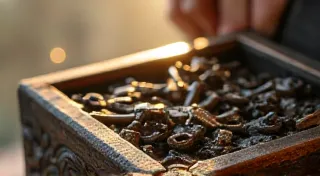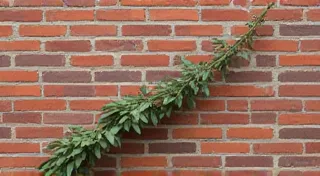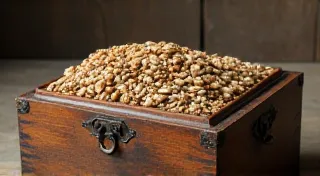Whispers of the Wind: Protecting Container Tomatoes from Environmental Stress
There's a certain beauty in things that endure, things that tell a story of resilience. It’s a feeling I get holding an antique accordion. The bellows, painstakingly stitched leather, the keys, ivory worn smooth by countless hands, the brass gleaming despite the passage of decades. Each button, each valve, a testament to the craftsmanship of a forgotten era. They've weathered storms, both literal and metaphorical, and still manage to breathe life into the air with music. Just like those enduring instruments, our heirloom tomatoes, especially when grown in containers, can face a relentless barrage of environmental challenges. Protecting them isn’t just about ensuring a bountiful harvest; it’s about safeguarding a lineage, a taste of history, a connection to simpler times.
Growing heirloom tomatoes in containers offers incredible flexibility, particularly for those of us with limited space. But that very freedom – the ability to move our plants to sunnier spots, away from pests – also means we become directly responsible for shielding them from nature’s extremes. The wind, the scorching sun, unexpected frosts – they all pose unique threats to these precious plants.

The Relentless Wind: Shielding Delicate Stems
Wind, seemingly a gentle caress, can be brutal to young tomato plants. It weakens stems, encourages blossom drop, and can even uproot container plants altogether. Think about those antique accordions; a sudden gust could easily damage the delicate reed blocks inside. Our tomato plants need a similar level of protection. The force of the wind is amplified in containers, as the roots have less support than they would in the ground.
The solution isn’t complex. Strategic placement is paramount. Consider the prevailing wind direction in your area. A south-facing balcony, while offering abundant sunshine, might also expose your tomatoes to harsh winds. A more sheltered spot, perhaps against a wall or fence, will provide a natural windbreak. When that isn't possible, create your own. Temporary barriers – burlap screens, trellises covered with fabric, even strategically placed patio furniture – can significantly reduce wind exposure. Regularly check the plants’ stems; if they're visibly bending or showing signs of stress, reinforce them with stakes or tomato cages.
Dancing in the Heat: Preventing Sunscald
The sun's embrace can quickly turn scorching. Just as a vintage accordion’s finish can crack and fade under prolonged exposure to harsh sunlight, our heirloom tomato plants are susceptible to sunscald – a painful burn on the fruit. The fruit, particularly those ripening on the western or southern sides of the plant, become leathery and discolored.
Partial shade during the hottest part of the afternoon is key. A strategically positioned shade cloth, even a simple umbrella, can make a world of difference. Remember that the intensity of the sun changes throughout the year. What provides sufficient shade in early summer might be inadequate in mid-summer. Rotate your containers periodically to ensure even exposure to sunlight, preventing one side from becoming overly sun-baked.
Embracing the Chill: Safeguarding Against Frost
Frost – the silent killer of late spring – can decimate a tomato plant in a matter of hours. The unexpected chill is similar to the fragility of an old bellows – a sudden expansion or contraction can rupture the leather. Protecting your container tomatoes from frost requires vigilance and preparedness.
The first line of defense is knowing your local frost dates. Keep a close eye on the weather forecast and be ready to act quickly. Bring your containers indoors if a frost is predicted. If that’s not feasible, wrap them in blankets, burlap sacks, or frost cloths. Bubble wrap can also be surprisingly effective. There are even commercially available tomato plant covers specifically designed to protect against frost. Remember that even a light frost can damage blossoms, hindering fruit production. It is better to be overly cautious than to risk losing an entire crop.

The Art of Restoration: Lessons from the Past
There's a parallel here to the restoration of antique instruments. A neglected accordion isn's simply cleaned and polished; it's meticulously assessed for damage. Leaks in the bellows are painstakingly patched. Cracked keys are replaced. Rust is carefully removed. It requires patience, skill, and a deep respect for the original craftsmanship.
Similarly, protecting our container tomatoes isn’t just about applying a quick fix. It's about understanding their needs, recognizing their vulnerabilities, and providing a nurturing environment. It’s about observing, adapting, and learning from our mistakes. If a plant consistently shows signs of stress despite our best efforts, consider changing its location or adjusting our protection methods. Just as a skilled accordion restorer constantly refines their techniques, we must be willing to experiment and learn.
Beyond the Basics: Optimizing Container Tomato Health
Beyond these core protective measures, a few additional practices can bolster your container tomatoes' resilience. Use a high-quality potting mix specifically formulated for vegetables. These mixes typically contain ingredients like peat moss, vermiculite, and perlite, which promote drainage and aeration. Consistent watering is essential, but avoid overwatering, which can lead to root rot. Fertilize regularly with a balanced tomato fertilizer. And finally, inspect your plants regularly for signs of pests or diseases and take appropriate action promptly.

Growing heirloom tomatoes in containers is a rewarding experience. It allows us to connect with a heritage of flavor and appreciate the beauty of nature. By understanding and addressing the challenges posed by environmental stress, we can ensure that our plants thrive, producing a bountiful harvest of delicious, sun-ripened tomatoes. Just as a carefully restored accordion breathes new life into a piece of history, our dedication and care can safeguard a legacy of flavor for generations to come.





